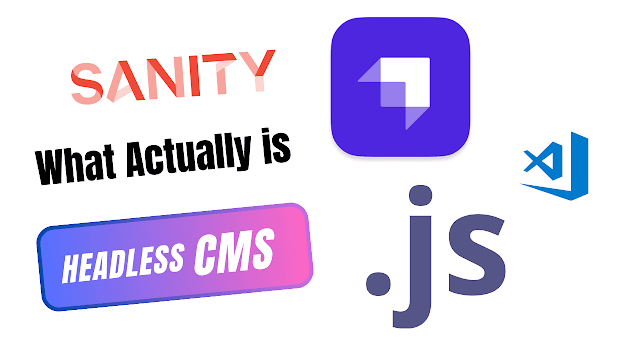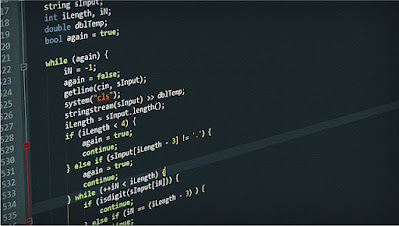What does headless CMS mean
Headless CMSs are important in web development because they separate content creation from how it's shown on a website. This separation lets developers create flexible and dynamic websites that work well on different devices. With a headless CMS, it's easier to integrate new features and technologies, Using headless CMS these days around make the development process faster and more efficient. Overall, headless CMSs help you build better websites that adapt to users' needs and preferences and with headless CMS you won't be taking that much time to get ready a website.
Well in this article i am going to talk about
- What does Headless CMS mean?
- The Significance of Headless CMS
- Top Examples of Headless CMS
- Earnings of Headless CMS Developers
Understanding Headless CMS: what does it mean?
Headless CMS (Content Management System), is used as a backend-only platform that literally focus on separating content management from its presentation layer. This architecture allows developers to manage content independently of how it is displayed on the frontend. Unlike traditional CMS platforms, headless CMS provides greater flexibility and enable developers to deliver content across various channels and devices. By decoupling content from presentation, organizations can create dynamic and engaging user experiences tailored to their audience's needs. With its focus on content management and distribution, headless CMS is having popularity among developers seeking scalable and adaptable solutions for modern web applications.
By the way if you don't know the process of separation or how Headless CMS work let me take you through the process, let's say you have an e-commerce website. With a traditional CMS, changing the layout or design of a product page might also affect how the product information is managed in the backend. However, with a headless CMS, you can update the product information separately from the website's design. This means you can easily add new products, update prices, or change descriptions without worrying about breaking the website's layout. It gives you more flexibility and control over your content, making it easier to keep your website up-to-date and relevant for your customers.
Furthermore Headless CMS platforms offer developers powerful APIs(Application programming interfaces) that facilitate integration with other systems and technologies.
The Significance of Headless CMS
Headless CMS is a game-changer about today in managing and delivering content online. It works by separating content from how it looks, and allows developers to create dynamic and user-friendly web experiences that adapt to what users want. This flexibility which we can work on easily lets organizations share content on various platforms like websites, mobile apps, and IoT devices, and it ensures a consistent brand experience everywhere. Additionally, headless CMS platforms often come with powerful tools (APIs) that easily connect with other systems, making work more efficient and scalable.
One more important thing about headless CMS is its support for delivering content across different channels, which even makes it more important and not avoidable technology in the market, well with this it easy for organizations to connect with users. Whether it's on a website, mobile app, or social media, headless CMS ensures content is presented correctly and meaningfully. This not only boosts user engagement but also helps in turning visitors into customers and building loyalty. As the digital world keeps changing, using headless CMS is crucial for staying agile and innovative.
Top Examples of Headless CMS
Another notable example is Contentful( by the way it is CMS name), it is literally a cloud-based Headless CMS that offers a flexible and scalable content management solution. Contentful's API-first approach enables developers to build dynamic and personalized digital experiences while maintaining control over their content. other than Strapi and Contenf here is the list of top ten Headless CMS for your knowledge.
- Strapi - An open-source Headless CMS with customizable content management solutions and powerful API capabilities.
- Contentful - A cloud-based Headless CMS offering a flexible and scalable content management solution with an API-first approach.
- Sanity - A real-time collaborative Headless CMS empowering developers to build structured content models and deliver content-rich experiences.
- GraphCMS - A GraphQL-powered Headless CMS simplifying content management and delivery for developers.
- Directus - A real-time API and App framework that allows you to self-host a headless CMS directly.
- Storyblok - A headless CMS with a visual editor, enabling developers and content creators to work efficiently together.
- Agility CMS - A Headless CMS that offers powerful content management and authoring capabilities along with advanced integrations.
- Prismic - A Headless CMS that enables content management and distribution with a strong focus on content modeling and API integrations.
- Kentico Kontent - A cloud-based Headless CMS with advanced content modeling and multi-channel content delivery capabilities.
- ButterCMS - A Headless CMS designed for developers, offering easy content management and powerful APIs for seamless integration.
Earnings of Headless CMS Developers
Earnings for Headless CMS developers can vary based on factors like skill level, experience, and location. Generally, developers who are skilled in popular platforms like Strapi, Contentful, and Sanity can earn competitive salaries. Industry reports suggest that senior Headless CMS developers, especially those with extensive frontend and backend development experience, can command six-figure salaries in regions with high demand for skilled developers.
Additionally, the demand for Headless CMS developers is expected to grow as more businesses adopt modern web development practices for immersive digital experiences. Developers specializing in Headless CMS and possessing deep knowledge of frontend technologies, APIs, and cloud computing are well-positioned to benefit from this trend. With organizations prioritizing digital transformation and omnichannel experiences, the demand for skilled Headless CMS developers is likely to keep rising, offering lucrative opportunities for professionals in this field.
You can see the table below showcasing salary packages for Headless CMS developers:
| Developer Role | Salary Package |
|---|---|
| Headless CMS Developer | $80,000 - $120,000 |
| Strapi Developer | $80,000 - $130,000 |
| Sanity Developer | $85,000 - $125,000 |
| Contentful Developer | $90,000 - $140,000 |
| Prismic Developer | $75,000 - $115,000 |
| Netlify CMS Developer | $80,000 - $120,000 |
| Storyblok Developer | $85,000 - $125,000 |
| Kontent by Kentico Developer | $85,000 - $130,000 |
| Ghost Developer | $75,000 - $115,000 |
| Cosmic JS Developer | $80,000 - $120,000 |



